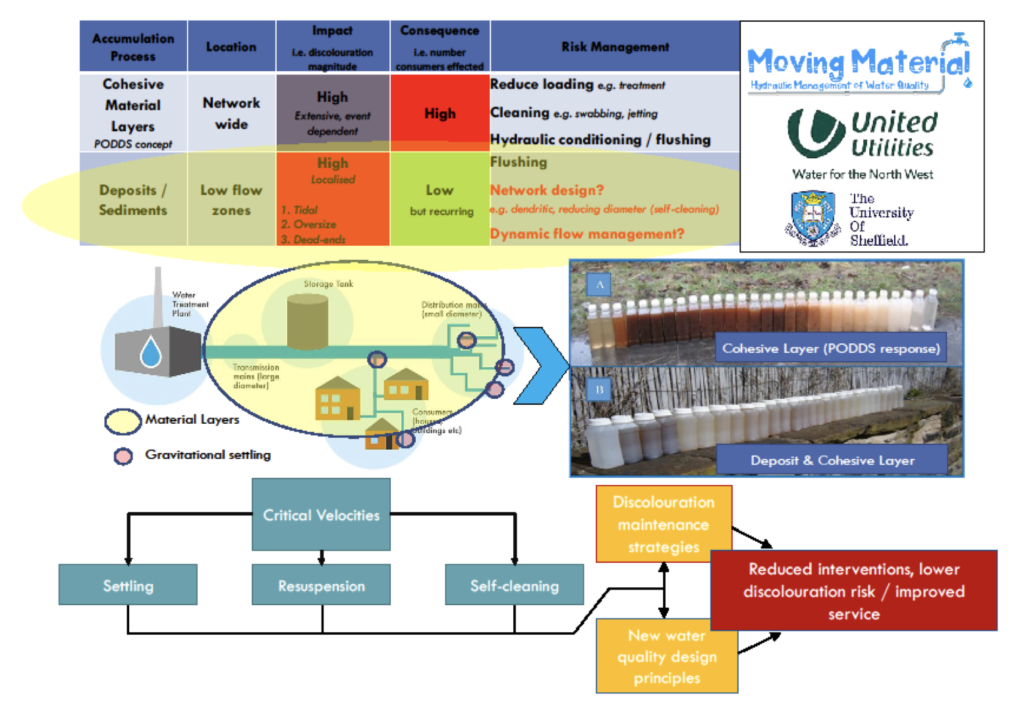Meet Reinar Lokk
Email: [email protected]
Academic and Industrial affiliations: The University of Sheffield, United Utilities
Title of research project: The Future of Hydraulic Water Network Design to Manage Discolouration Risk

For UK’s water companies, discolouration of the drinking water is the main source of customer complaints. Drinking water discolouration can be traced back to material accumulation within the distribution system. The accumulated material can originate from corroding pipes, treatment works or even from microbiological growth within the network. Thus far the research has focused on PODDS type of accumulation where discolouration material builds up in cohesive layers around the circumference of the pipe. However, recent evidence has shown that there can be additional ‘hot spots’ where the material is accumulating by sedimentation. My research project, called Moving Material, focuses on trying to identify those additional sedimentation zones and how hydraulic parameters affect sedimentation build-up. The image below showcases flushing exercises carried out in different areas. Picture A shows PODDS type of gradual increase of material mobilization in response to flushing steps. Whereas on picture B we can see a sudden and instant response to low flow flushing step, which indicates loose deposits/sediments within the network. Ability to identify those additional ‘hot spots’ would give water companies an advantage on discolouration maintenance strategies and inform the design teams of new water quality design principles. Enhanced knowledge of the previous would directly benefit the customer as the discolouration risk is lowered and the service improved.

